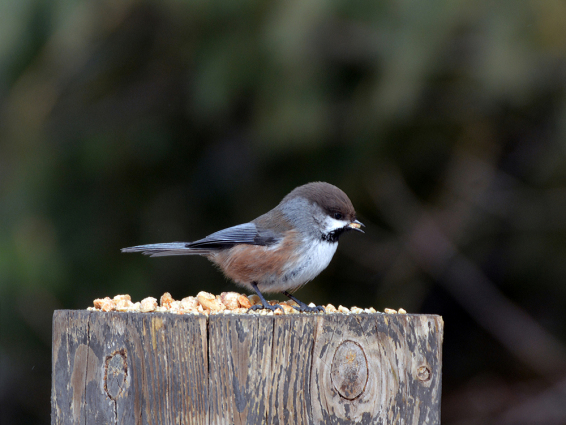
The Boreal Chickadee(Poecile hudsonicus) is a small songbird that is classified in the Paridae(chickadees, tits, and titmice) family.
Physical Characteristics
A Boreal Chickadee has a brown cap, cinnamon sides, gray collar, white cheek patch, and a short beak.
| Length | 12.5-14 cm(4.9″-5.5″) |
| Wingspan | 20.9-21.6 cm(8.3”-8.5”) |
| Weight | 7-12.4 gm(0.3-0.4 oz.) |
Range
Boreal Chickadees can be found throughout most of Canada, and northern areas in the following states; Montana, Minnesota, Washington, and Wisconsin.
Boreal Chickadees can also be seen in Alaska, Delaware, New Jersey, New York, Maryland, and the New England states. Boreal Chickadees are year round residents throughout their range.
Habitat
Boreal Chickadees inhabit coniferous forests, mixed forests, and deciduous forests.
Breeding
Boreal Chickadees nest inside cavities in dead trees. The trees they nest in include; fir, spruce, pine, poplar, alder, willow, tamarack, and birch. The nest entrance can be up to 10.7 meters(35 feet) above the ground. The female excavates the nesting site and lines the cavity with nest materials, such as; bark, feathers, fur, hair, lichen, moss, and plant down. The clutch size is 4-9 eggs. The eggs are off-white with reddish-brown sports. A Boreal Chickadee egg is 1.5-1.7 cm(0.6”-0.7”) long, and 1.1-1.3 cm(0.4”-0.5”) wide. The incubation period is 14-17 days. The chicks are naked and blind when they hatch.
Diet
Boreal Chickadees eat seeds and insects, they also eat insect eggs and larvae.
Conservation Status
The Boreal Chickadee is listed as least concern.
Fun Facts
- Boreal Chickadees store food in stockpiles known as caches to be eaten over the winter months. This is a behavioral trait that the Boreal Chickadee shares with other chickadee species.
- A Boreal Chickadee can live for up to 5.3 years.
